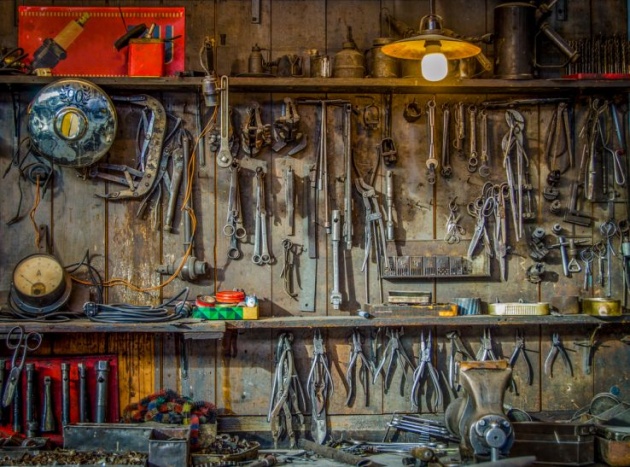
Makers have long been known as hobbyists or tinkers. However, with increased access to professional-grade tools, the maker movement is transforming business as usual. Through collaboration and connectivity, makers are inspiring innovation on a daily basis with the creation of smart gadgets, machines, robots and wearables.
This new way of doing business is a shift from the historic model where innovation was monopolized by multi-million-dollar companies. Makers and their peers have the opportunity to build cutting-edge products, test them in collaborative workspaces and share their inventions online in order to bring “the next big thing” to market for mass consumption.
It is through this connectivity that makers are able to contribute to the Internet of Things — a world of interconnected devices that use sensors to interact with the people, the environment and other devices around them. This smarter, connected way of life is the future of technology worldwide.
As makers continue to grow and garner global attention, corporations and educational institutions should look to embrace this movement and foster the next generation of creators.
The New Economy Of Innovation
Historically, innovative technology has come from large corporations, but these ideas begin and thrive in the heads and hands of individuals — within networks of “makers.” Now more than ever, it is critical for major technology companies and global brands to take notice of this powerful community and connect them with the tools and technologies that can help spur their creativity, drive innovation and ultimately enable them to bring their latest design to market.
By embracing the maker movement and providing access to industrial-grade tools and resources, technology companies can empower individuals and foster their creativity to solve the engineering problems of tomorrow. For example, TechShop created professional makerspaces across the nation to provide high-end tools for engineers to collaborate and create products that use advanced technologies.
GE also launched a makerspace called FirstBuild to engage students, entrepreneurs and makers to co-create appliances of the future, such as instrumented refrigerators, quiet-close microwave doors or a smart water pitcher.
Ultimately, companies like GE and TechShop are enabling a new process of product development and capturing the creative energy surrounding its products. For companies to remain competitive, they need to help evolve the maker movement and make it easier for an idea to originate in the imagination of an individual and spread to a mass market.
Following the development of a new product, makers have the opportunity to secure funding through crowdsourcing sites where success is based on the mass consumer valuation of the product instead of the assessment of a few venture capitalists.
With access to the right tools and resources, this evolving network of makers and innovators will significantly advance the development of smart devices in the Internet of Things.
The Need For An Education Transformation
It also is critical for education systems around the world to embrace the maker movement and ensure students have access to the very tools and resources that are enabling makers to bring “the next big thing” to a mass market.
Historically, the education system has produced graduates that went on to work for companies where new products were invented, then pushed on to consumers. But our students are our future makers, and they need more hands-on access to the technology that will enable them to change the process of new product development.
We need schools at all levels to transform traditional classrooms and libraries into collaborative makerspaces.
We have yet to see education systems embrace the method of learning by creating. The industry is recognizing the need to adapt, but education has been slower to respond. Technology alone is not enough. Technology adoption by schools has not changed the lectures and multiple-choice tests that make up the fundamental way we teach and assess our students. Students are now demanding this type of environment, spurred on by their experiences in hands-on programs like FIRST.
Fortunately, some educational institutions and organizations have begun to recognize the value of the maker movement. For example, in the K–12 space, LEGO Education recently launched the LEGO MINDSTORMS Education EV3 programming app, which enables teachers to conduct a full robotics lesson in the classroom in 45 minutes. This offers students hands-on experiences to help them develop programming skills and prepare for future innovations.
Education systems should embrace similar tools and resources that will enable educators to create problem-solving environments instead of one-way lectures. Some college institutions, such as the University of California at Berkeley and Arizona State University, are leading the charge by creating makerspaces on campus for students to collaborate, but other learning institutions need to follow to prepare students for tomorrow’s innovation. We need schools at all levels to transform traditional classrooms and libraries into collaborative makerspaces.
The Future Impact
Today, consumers are driving the innovation process. Education, business and invention must meet their requests. A subset of consumers — makers — are at the center of this innovation transformation. Consumers no longer have to settle for what is sold on the shelves of department stores. They no longer have to dream of tools and gadgets and gizmos that can make their lives easier or more fun. They can make what they need and want.
By democratizing the product development process, helping new maker developments get to market and transforming the way we educate the next generation of innovators, we can enable makers to usher in the next industrial revolution.



